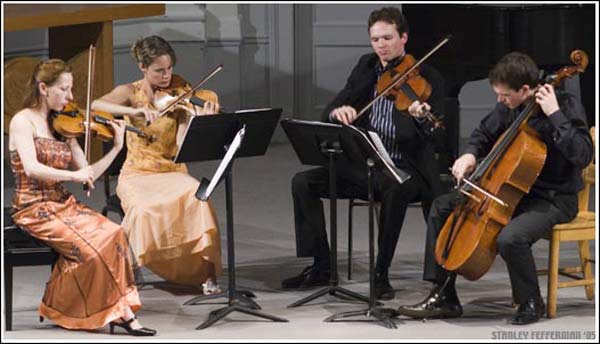The effect of the concert is like the chiaroscuro self-portraits of Rembrandt where, out of the predominating darkness of shadow come flashes of light illuminating the indomitable human form. During the concert we hear, again and again, how deep sadness formed in a tragic situation inexplicably gives way to the astonishing lightness and energy of dance.
K.A, Hartmann’s First String Quartet opens with a theme based on a traditional Hebrew air (“Eliyahu Ha Navi”) – a sweetly melancholy theme that is developed with bitter harmonies sad beyond tears. It moves to a more excited mood, as if people, among the activities of daily life, are discussing a threat that gradually grows more definite till it begins to pulse like an approaching locomotive.
The passage from Bartok’s answer to the outbreak of war, his Sixth String Quartet (1939), is sadness marked with an individual tenderness and vulnerability that edges into the eerie. The String Quartet No.3, opus 46 (1943) by Victor Ullman, who died in Auschwitz, was composed while he was a resident of Terezinstaadt. Here the bass scours the depth of pathos and depression, the violins climb into the upper reaches of terror, till the viola leads the group into balanced and bearable melancholy.
Shostakovich’s Quartet No.8 in C minor opus 110 (1960) is a celebration of survival that reminds us that the business of art is to look into the face of suffering and find there inspiration to sing and dance as long as there is life.
This sense of life derived from the music is enhanced by the four excellent Casals musicians who bring the lightness of youth to the music while honouring the dignity and depth of experience the music represents. Their recordings are currently a bit hard to get but will surely repay the effort of searching or a little wait.


